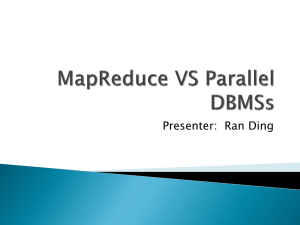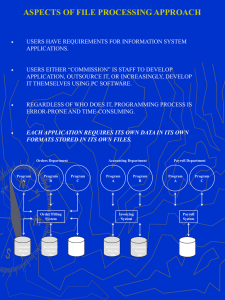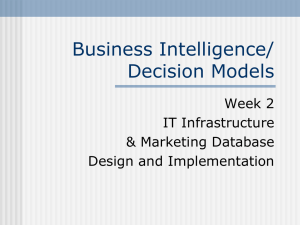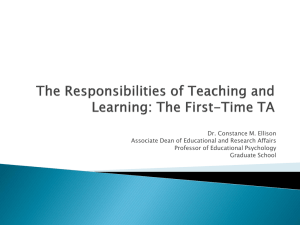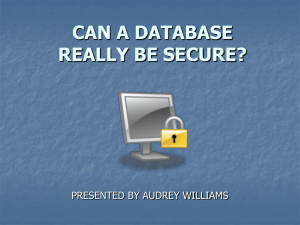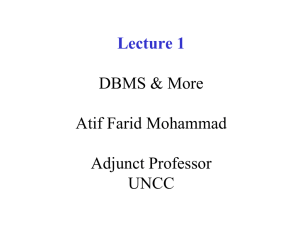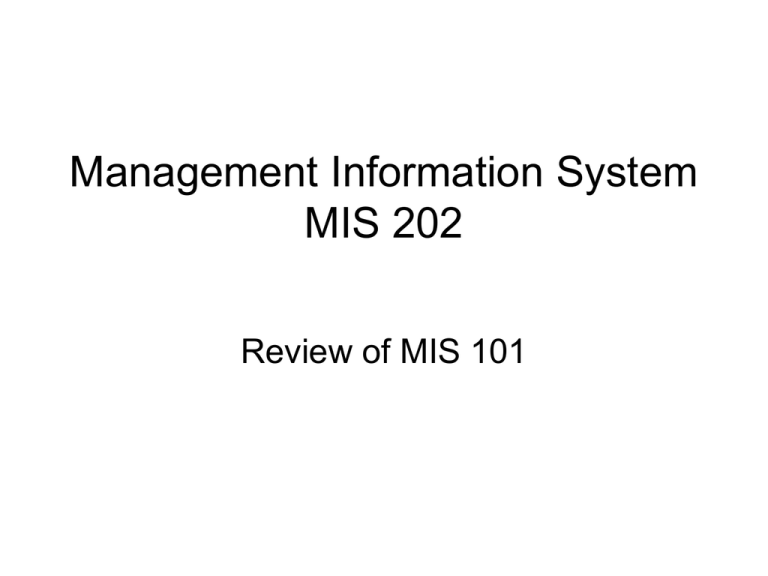
Management Information System
MIS 202
Review of MIS 101
Instructor
• Name: Mohammed Arif Mazumder, MSc.
• Current Position: Senior Lecturer, CSE, DIU
• Education:
– MSc: University of Wollongong, Australia.
– Major in Network Security
– B.Sc. (Engineering): University of Wollongong,
Australia.
– Major in Software Engineering
• Work Experience: Network Engineer, World
Health Organization’s Regional Office, JICA,
UNDP, BRAC Bank, E.Law Asia Pacific Australia,
British American Tobacco, Australia, AIUB.
Instructor Cont’d
• Email:
arifmazumder@daffodilvarsity.edu.bd
– Please do not send me personal emails using
this address.
• Personal Web Page:
http://www.arifmarias.wordpress.com/
You will find a link to the course on this
page.
Study Materials
• Textbooks:
– Essentials of Business Information Systems
(12th Edition), Kenneth C. Laudon and Jane
P. Laudon, Pearson Prentice Hall.
– Management Information Systems (8th
Edition), Raymond McLeod, and George
Schell.
– Introduction to e-commerce (2nd Edition),
Jeffery Rayport, and Bernard Jaworski,
ISBN:0-07-255347-2
Study Materials Cont’d
• Lecture Notes:
– Provide by the instructor
– These notes should be augmented by your own notes from the
class.
– Any additional materials discussed in the class are required
unless otherwise specified.
• PowerPoint:
– Provided by the instructor
– These presentations are not enough as study materials.
• Practice Questions:
– The instructor will post sample questions for practice for the
exams on the course Website.
Project Requirements
The project can be one of the following activities:
• A Term Paper. Only one student can participate in a term
paper. See paper requirements on the course website.
• A Business Plan: Up to three students can participate in
developing a business model. This will be covered very
late in the course.
• A presentation of a paper:
– A student may opt to present a paper from a list of papers provided by the
instructor (on the course Website). Only one student can present the
same topic.
– Typically these papers are large and require careful reading.
– The student is expected to fully understand the paper, prepare a 15
minutes presentation on it, and be ready to answer questions during the
presentation. Such presentations will be part of the midterm and final
exams.
Introduction to Computers,
Networks, and Databases
What is a computer?
A machine that, under a program’s direction,
performs four basic operations: input,
processing, output, and storage
What is a program?
A list of instructions that tells a computer
how to perform the four basic operations
What is input?
•Data entered into the computer
system for processing
•Electrical impulses representing
words, numbers, images, or sounds
What is processing?
Performing arithmetic or comparison
(logical) operations on the data
Arithmetic
Logic
4 + 16 =
728 > 546
20
What is output?
Showing the results of the processing
operation in a way people can understand
What is storage?
Saving the data or output so that it can be
used again later
What are the computer’s physical components?
HARDWARE
Input devices- Enable users to put data into the
computer for processing
Processing circuitry- Components located in the
system’s case that transform data into information
Output devices- Peripherals that show the results of
processing
Storage devices- Used to hold all the programs and
data that the computer uses
Communication Devices- Used to move data
between computers
What are input devices?
Mouse- pointing device
Keyboard
Microphonespeech-recognition
What are processing devices?
Motherboard
Expansion card
Central Processing Unit- CPU
Random Access
Memory- RAM
What are output devices?
Monitor
Printer
Speakers
What are storage devices ?
Micro Drive
Floppy Disk Drive
CD / DVD
Drive
Zip Drive
Jazz
Drive
Hard Drive
Tape
Drive
What are communications devices ?
Modem
Network Interface
Card- NIC
What are the different types of computers?
Desktop- PC, Microcomputer
Workstation
Supercomputer
Mainframe
Minicomputer
Server
Notebook- Laptop
Personal Digital
Assistant- PDA,
Handheld, Pocket PC
What is software?
Programs that give the computer’s
hardware its step-by-step instructions
What are the different types of software?
System software- All programs that help the
computer function properly
Application software- All the programs you
use to perform a task such as writing a letter
or browsing the World Wide Web
System software
Application software
What is an operating system?
System software that . . .
Coordinates the various functions of the
computer’s hardware
Provide support for running application
software
Provide utility programs for optimizing
computer performance
What is a software suite?
A collection of full featured standalone
programs that usually share a common
command structure and have similar
interfaces
MS WORD
MS EXCEL
MS ACCESS
MS POWERPOINT
MS FRONT PAGE
What is the internet?
A world-spanning computer network
Network
• A network is a system of hardware,
software and transmission components
that collectively allow two application
programs on two different stations
connected to the network to communicate
well.
Elements of a Network
Access links connect
stations to the
first switch
Usually copper wire
Increasingly, radio links
Access
Link
Access
Link
Access
Link
Access
Link
Client/Server Architecture
Usually, two types of stations
Clients and Servers
Server
Client PC
Request
Response
Network
Clients
Receive
Services
Servers
Provide
Services
Geographic Scope
• Local Area Network (LAN)
– Limited geographical distance: home, office,
building, campus, industrial part
– Customer premises operation
• User firm chooses technology
• User firm needs to manage on ongoing basis
– Low cost per bit transmitted
• Companies can afford high speed
• 100 Mbps to the desktop is typical
Geographic Scope
• Wide Area Network (WAN)
WAN
– To link sites
• Long distances
– Requires the use of carriers to provide service
• Limited and complex choices but carrier manages
– High cost per bit transmitted
• Companies cannot afford high speeds
• Usually low speed (56 kbps to a few megabits per
second)
Geographic Scope
• Other Distinctions
– Metropolitan Area Network (MAN)
• Single urban area (city and its suburbs)
• Faster than long-distance WANs
– Personal Area Network (PAN)
• A person’s body or desk area
– Storage Area Network (SAN)
• To link servers to storage devices
Internet
• An internet is a group of networks linked together with
routers in a way that allows an application program on any
station on any network in the internet to be able to
communicate with an application program on another
station on any other network.
Network 1
Network 2
The Internet
Browser
Webserver
Software
Network
Packet
Router
Packet
Route
Router
Router
Packet
User PC
(Host)
IP Address=128.150.50.9
Webserver
(Host)
IP Address=128.171.17.13
Host name=voyager.cba.hawaii.edu
Databases
What is a Database ?
• A Database (DB) is collection of related data - with the following
properties
– A DB is designed, built and populated with data for a
specific purpose
– A DB represents some aspect of the real world.
– Self-Describing: A database maintains a description of
the data it contains (Catalog)
– Related: Data has some relationship to one another,
e.g., e.g.: Information stored in an University
Students, Courses, Faculty, Students taking courses, Faculty teaching
courses, ....
A Database System Components
• The Database
• Database Management System (DBMS)
• Application Programs
Users
DBS
Application Programs
Query and transaction Processing
Management of Stored Data
Meta-data
DBMS
Database
Database Management System (DBMS)
• A set of programs that are used to:
– Define, construct, maintain and manipulate data in a database.
– Enable one or more users create and concurrently access data in
a database.
– Manage user requests, so that users and programs are free from
having to understand where the data is physically located on
storage media and who else may also be accessing the data.
• The most commonly used DBMS is a relational database
management system (RDBMS). Examples: Access, Oracle,
DB2
• A standard user and program interface to a DBMS is the
Structured Query Language (SQL).
Advantages of a DBMS
• Data Consistency and Integrity - by controlling access
and minimizing data duplication
• Application program independence - by storing data in a
uniform fashion
• Data Sharing (concurrency control) - by controlling
access to data items, many users can access data
concurrently
• Backup and Recovery
• Security and Privacy
• Multiple views of data



